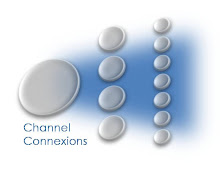

 ACCELERATION: Acceleration considers the rate of change in velocity. This metric offers an effective way to measure specific actions taken to affect velocity. For instance, let’s assume that a Partner relationship has turned sour and, as a result, there has been a decline in revenue over a period of time. In fact, over multiple periods of time, revenue has declined at an increasing rate. To mitigate the downward spiral, you implement an aggressive program designed to re-engage the Partner. By examining the rate of change in velocity, you can effectively measure the effects of the program.
ACCELERATION: Acceleration considers the rate of change in velocity. This metric offers an effective way to measure specific actions taken to affect velocity. For instance, let’s assume that a Partner relationship has turned sour and, as a result, there has been a decline in revenue over a period of time. In fact, over multiple periods of time, revenue has declined at an increasing rate. To mitigate the downward spiral, you implement an aggressive program designed to re-engage the Partner. By examining the rate of change in velocity, you can effectively measure the effects of the program.The “scientific” and ongoing management of channel performance data is essential, because it will help formulate the most effective initiatives to either mitigate or exploit current opportunities. To me, the biggest challenge is to consider multiple variables simultaneously. In the above examples, we only considered one variable…revenue. While this is ok to illustrate the principles, it is not realistic, however, as there are many variables to consider. The “new” channel marketing model should be to effectively measure the change, velocity, and acceleration of multiple variables simultaneously and quickly implement effective campaigns to take advantage of what the data tells us.
If you want to know the strength of each of your channel partner relationships, you need more than a “picture” or single snapshot in time. You have to know and understanding how the relationship is changing, why it is changing, and how quickly it is changing. Companies that are able to gather and analyze this data will be in the advantageous position of building stronger and profitable relationships with their partners.









